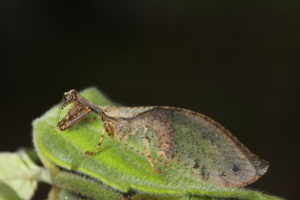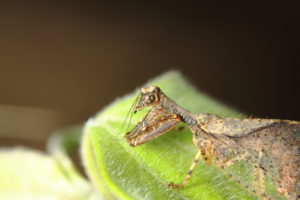A new genus courtesy of some camera-shy gibbons
During our BBC/Smithsonian expedition to Myanmar our final destination was the fabled Tamanthi Wildlife Reserve, a 2,500 km2 forest in the north of the country. Home to tigers and elephants, this reserve also once supported Javan and Sumatran rhinoceros, both of which may have clung on into the 1980s, but are now sadly gone, probably due to poaching. The reserve is difficult to get to and apart from perhaps some general butterfly collecting when the country was under British rule I doubt that any entomologists have been there.
We were lucky enough to have around two weeks there and it was undoubtedly the most interesting area we visited. During our time in the reserve a small team of us were away from base-camp on the trail of tigers and I was catching any interesting insects we came across. Along the way we were distracted by western hoolock gibbons, an endangered ape and we decided to try and get some footage of them. To do this required a strange game of musical statues to get as close as possible to the apes; running through the undergrowth during their raucous songs and pausing stock still when they fell silent. During one of these pauses an insect fluttered into my face, which I promptly grabbed. I was delighted to see it was a fairly large mantisfly and an unusual one at that. I carefully got it into a container and eventually into the Natural Museum in London. Ben Price from the Museum confirmed it was unusual – there was nothing else like it in the collection and it was later described as a new genus (see the description).
This was just one of the encounters I had in that beautiful forest. The specimens I collected there are still being processed and I anticipate many more undescribed species. Stay tuned for more.


Leave a Reply